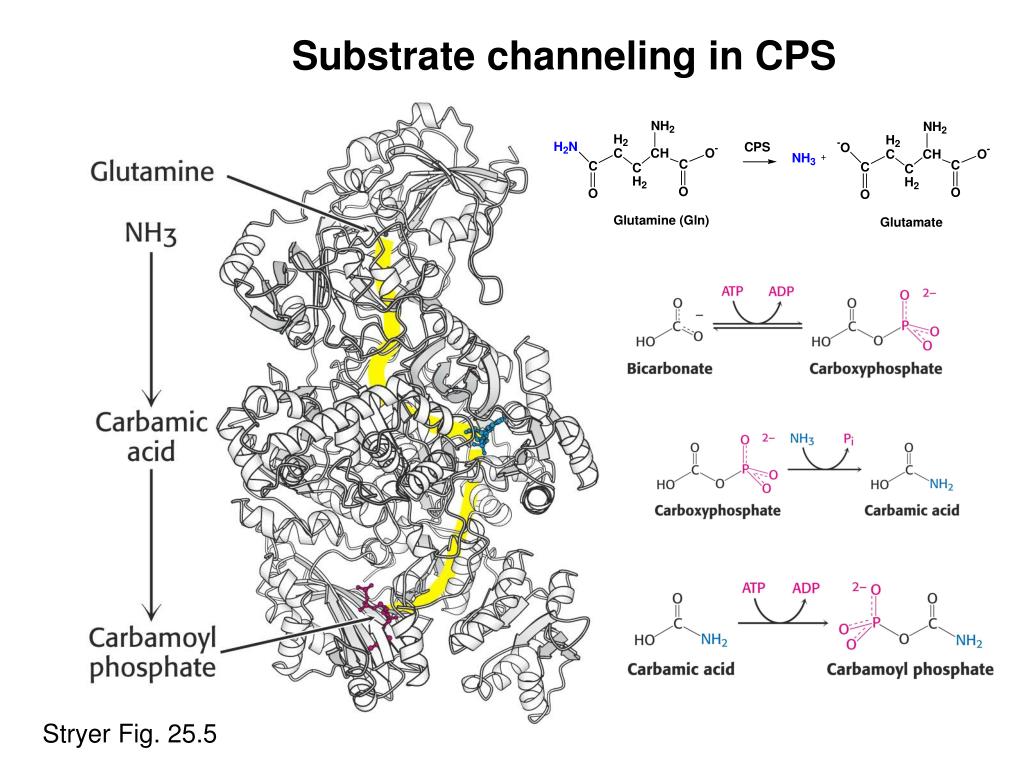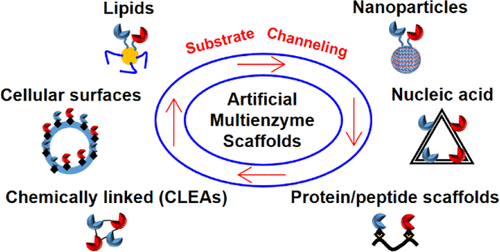What Is The Benefit Of Substrate Channeling

Imagine a bustling factory floor. Each machine works tirelessly, transforming raw materials into finished goods. But what if these machines could be linked, their outputs directly feeding the next stage of production without delay or waste? This vision, on a microscopic scale, is akin to the wonders of substrate channeling in the realm of biochemistry.
At its heart, substrate channeling is a clever strategy employed by cells to enhance the efficiency of biochemical reactions. It involves the direct transfer of a reaction intermediate—the substrate—from one enzyme active site to another, without it ever fully diffusing into the surrounding cellular environment. This seemingly simple mechanism has profound implications for the speed, regulation, and overall performance of metabolic pathways.
The Essence of Substrate Channeling
Think of an assembly line where components are handed directly from one worker to the next, skipping the storage bins and minimizing the risk of loss or contamination. That's the basic idea behind substrate channeling.
It's a molecular "relay race" where the baton (the substrate) is passed swiftly and securely from one enzyme runner to the next. This streamlined process avoids the dilution and potential degradation of the intermediate that can occur during free diffusion.
The term, *substrate channeling*, was first coined several decades ago, marking the formal recognition of this phenomenon. Since then, research has revealed its widespread presence across various metabolic pathways and organisms, showcasing its critical role in sustaining life.
Why is Substrate Channeling Beneficial?
The benefits of substrate channeling are multifaceted, offering a distinct advantage in the complex and competitive environment of the cell. These advantages extend beyond simply speeding up reactions.
Enhanced Reaction Rates
One of the most prominent benefits is the dramatic increase in reaction rates. By preventing the diffusion of intermediates, substrate channeling effectively increases the local concentration of the substrate at the active site of the next enzyme.
This concentrated delivery accelerates the subsequent reaction, leading to a faster overall pathway. This is particularly important for reactions that are inherently slow or have a low affinity for their substrate.
Improved Pathway Efficiency
Beyond speed, substrate channeling greatly enhances the overall efficiency of metabolic pathways. Intermediates, when freely diffusing, can be lost to side reactions or degraded by other enzymes present in the cell.
Substrate channeling minimizes these losses by providing a protected route, ensuring that the intermediate is efficiently converted into the desired product. This increased efficiency reduces the cellular resources required to produce a given amount of product.
Protection from Degradation and Side Reactions
The cellular environment is a complex soup of enzymes and molecules, each vying for attention. Freely diffusing intermediates are vulnerable to unwanted side reactions or degradation by enzymes that might accidentally bind to them.
Substrate channeling acts as a shield, protecting these vulnerable intermediates from these destructive forces. It essentially creates a private pathway where the substrate is safe and secure until it reaches its intended destination.
Regulation of Metabolic Flux
Substrate channeling can also play a crucial role in regulating metabolic flux – the rate at which metabolites flow through a pathway. By physically associating enzymes, cells can coordinate the activity of different steps in a pathway.
This coordinated action allows for precise control over the production of essential metabolites. For instance, feedback inhibition, where the end product of a pathway inhibits an earlier enzyme, can be more effective when enzymes are channeled.
Examples of Substrate Channeling in Action
Substrate channeling isn't just a theoretical concept; it's a real and vital process occurring in cells every moment. Several key examples highlight its significance in various biological pathways.
Tryptophan Synthase
Tryptophan synthase is a classic example of substrate channeling. This enzyme complex catalyzes the final two steps in the biosynthesis of the amino acid tryptophan.
The intermediate, indole, is channeled directly from the active site of the first subunit to the active site of the second, preventing its escape into the surrounding environment. This channeling enhances the efficiency of tryptophan synthesis and protects the cell from the toxic effects of free indole.
Carbamoyl Phosphate Synthetase
Another example is carbamoyl phosphate synthetase, which catalyzes the first committed step in the urea cycle and pyrimidine biosynthesis. This enzyme channels a reactive intermediate, carbamoyl phosphate, to prevent its premature hydrolysis.
This channeling is crucial for ensuring that carbamoyl phosphate is used efficiently for its intended purpose. Without it, the pathway would be significantly less efficient, and the cell would expend more energy on the production of urea and pyrimidines.
Pyruvate Dehydrogenase Complex
The pyruvate dehydrogenase complex (PDC), a multi-enzyme complex responsible for converting pyruvate into acetyl-CoA, a key molecule in cellular respiration, also relies on substrate channeling. This massive complex consists of multiple copies of three different enzymes.
The intermediates of the reaction are channeled between the active sites of these enzymes, significantly increasing the overall rate of the process. This rapid production of acetyl-CoA is crucial for fueling the citric acid cycle and generating energy for the cell.
The Future of Substrate Channeling Research
The study of substrate channeling is an active and exciting area of research. Scientists are constantly developing new techniques to probe the intricacies of these enzyme complexes.
Researchers are striving to understand how these channeling mechanisms are regulated and how they contribute to overall cellular metabolism. Advanced techniques such as cryo-electron microscopy are providing unprecedented structural details of enzyme complexes, allowing for a deeper understanding of the physical basis of substrate channeling.
Further insights into substrate channeling could have profound implications for various fields, including metabolic engineering and drug discovery. Understanding how to manipulate substrate channeling could lead to the development of more efficient biocatalysts for industrial applications. It could also lead to new therapeutic strategies for treating metabolic disorders by targeting specific channeling mechanisms.
Conclusion
Substrate channeling is a testament to the elegance and efficiency of cellular processes. It’s a vivid reminder that even at the smallest scales, organization and coordination can make all the difference.
As we continue to unravel the secrets of substrate channeling, we gain a deeper appreciation for the intricate dance of molecules that sustains life itself. And perhaps, we can learn a thing or two about optimizing our own "assembly lines" in the world around us.


















